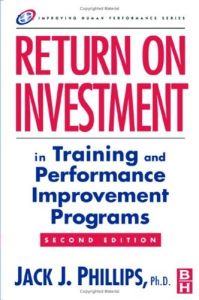Join getAbstract to access the summary!

Join getAbstract to access the summary!
Jack J. Phillips
Return on Investment in Training and Performance Improvement Programs
Butterworth-Heinemann, 2003
What's inside?
You can show that your training and development programs add to the bottom line. Here’s how.
Recommendation
Companies want their training and development programs to succeed in coaching employees and enhancing their career advancement, as well as in contributing to the bottom line, but training’s results can be difficult to quantify. If you’re a training officer, and demonstrating unshakable ROI is at the top of your to-do list, Jack J. Phillips’s calculations can help you prove your programs’ worth. His book is by no means a quick read, but it is a useful one, densely packed with details, instructions, calculations, analyses and case studies – including one highly detailed case history. getAbstract recommends this study on returns to training and development managers and to executives who want to authenticate the fiscal impact of their training and development budget.
Summary
About the Author
Jack J. Phillips has a PhD in human resources management. The Jack Phillips Center for Research provides HR advice to companies in the US and worldwide.





















Comment on this summary